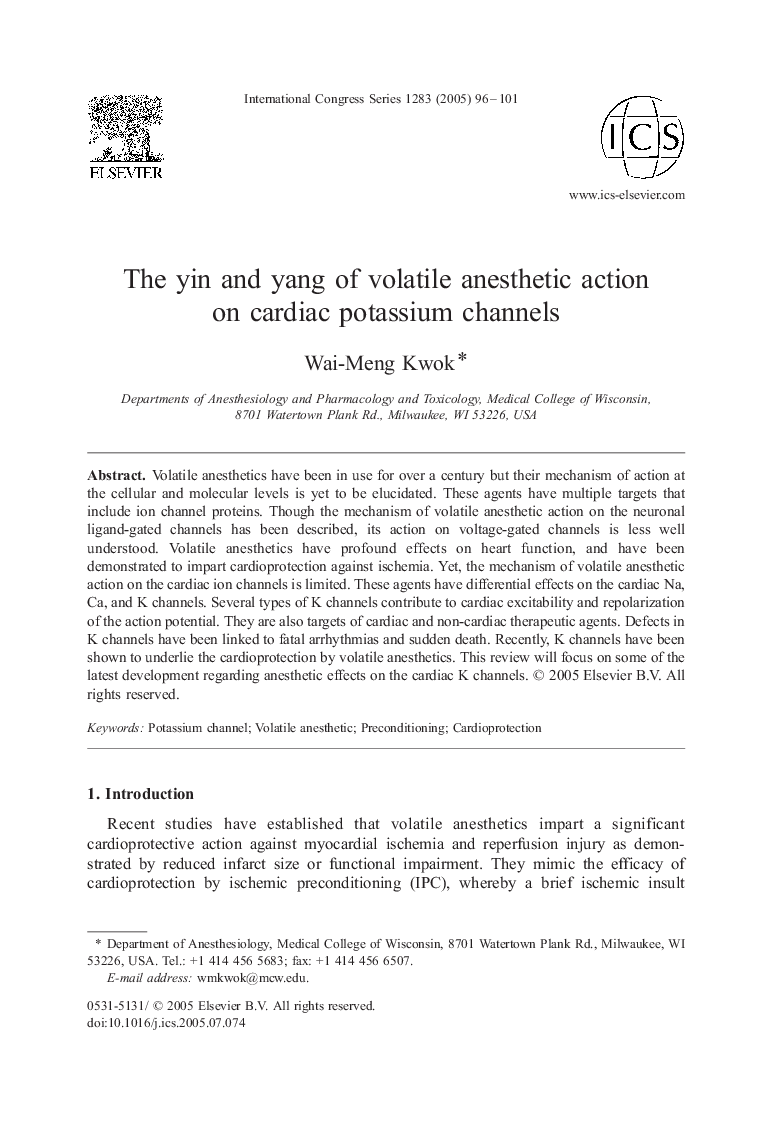| Article ID | Journal | Published Year | Pages | File Type |
|---|---|---|---|---|
| 9021455 | International Congress Series | 2005 | 6 Pages |
Abstract
Volatile anesthetics have been in use for over a century but their mechanism of action at the cellular and molecular levels is yet to be elucidated. These agents have multiple targets that include ion channel proteins. Though the mechanism of volatile anesthetic action on the neuronal ligand-gated channels has been described, its action on voltage-gated channels is less well understood. Volatile anesthetics have profound effects on heart function, and have been demonstrated to impart cardioprotection against ischemia. Yet, the mechanism of volatile anesthetic action on the cardiac ion channels is limited. These agents have differential effects on the cardiac Na, Ca, and K channels. Several types of K channels contribute to cardiac excitability and repolarization of the action potential. They are also targets of cardiac and non-cardiac therapeutic agents. Defects in K channels have been linked to fatal arrhythmias and sudden death. Recently, K channels have been shown to underlie the cardioprotection by volatile anesthetics. This review will focus on some of the latest development regarding anesthetic effects on the cardiac K channels.
Related Topics
Life Sciences
Biochemistry, Genetics and Molecular Biology
Molecular Biology
Authors
Wai-Meng Kwok,
